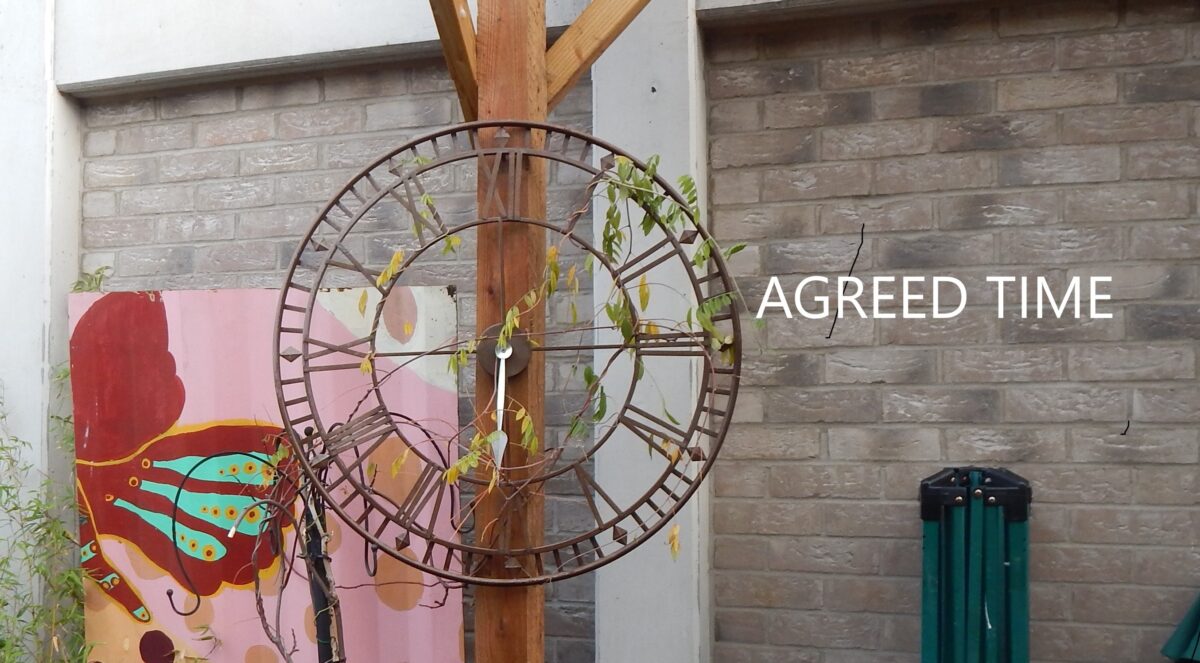This time of year we very aware of time. The days are short as we approach the winter solstice. Today, the sun rose at 07.58 and set at 15.51. A day length of 7 hours and 53 minutes. There’s still a week to go till the solstice (December 21) when the day will be three minutes shorter.
I belong to a walking club. We might arrange to meet at 9.45 am at Waterloo to catch the 10.05 to Guildford. The big board at the station tells us if the train is on time. We are always making such appointments, getting to a theatre or cinema on time, setting the alarm, arranging to get into the community garden to do a session.
This works because we are in agreement as to the correct time. But it wasn’t so long ago, that the UK didn’t have a fixed time. The time in Manchester was different from the time in London or Edinburgh. This was of no concern when the fastest means of transport was the horse, covering say 30 miles in a day. Each area took its time by highest point of the sun. That was noon, signalled by say a church bell or a central clock in the town square to set your own clock by.
The big change came with the railways in the 19th century. Passengers needed to know exactly what time the train was due. Train companies needed to know the time when other trains were coming to avoid crashes which were all too frequent in the early days of rail.
In 1840, Great Western Railways set a standard time on its lines. Over the next seven or so years, this was taken up by other railway companies. London time was used, which was the time at the Greenwich Observatory, already called Greenwich Mean Time. Initially GMT had to be carried by an operative with a clock going on a train. He would stop off at the various stations to correct their clocks. By 1855, the telegraph put him out a job.
There was resistance to London Time. Town Hall clocks and station clocks in some areas gave different times with up to 20 minutes variation. Though, by 1858, 98% of towns had adopted London Time. The final step, which went beyond the railways, was the Definition of Time Act of 1880 which set one time for the whole country.
This is time setting by agreement, which is the best you can do, as there is no actual standard time. You might say, what about the day, the time it takes for the earth to do one revolution. But the Earth’s rotation on its axis is slowing down due to tidal deceleration caused by the gravitational pull of the moon. This causes the length of a solar day to increase by about 2 milliseconds per century. Not a lot you might say.
Even if we accept the day, then we have to agree on units of time to break it up. The ancient Egyptians about 3000 years ago first came up with the idea of the 24 hour day. Al-Biruni, an 11th-century Persian scholar, is credited with subdividing the hour into minutes and seconds. These units don’t actually exist in nature. It is by general agreement, and their utility, that has brought about worldwide acceptance.
But all this is rough and ready timekeeping. Good enough to keep a doctor’s appointment, but the solar day is now two milliseconds longer than it was in 1870. The latest science needs a standard second, not one that is slowly eroding.
The current definition of a second is:
The duration of 9,192,631,770 periods of the radiation corresponding to the transition between two hyperfine levels of the ground state of the caesium 133 atom.
Reading that gives me a headache. We have well and truly left the earth’s revolution and anything we recognise in every day life when defining a second in those terms. We are in the realm of atomic clocks, most of which use the caesium atom. The best atomic clocks are accurate to within one second in a 100 million years.
Who cares about about milliseconds (a 1000th of a second) you might say. You do. For walkers, it has enabled the biggest revolution in our activity since the 1 to 25,000 maps, for drivers Satnav, for ships, trains, and aircraft their accurate positioning.
We are in the realm of GPS (Global Positioning System). GPS satellites have atomic clocks. Four of them homed on you can pinpoint your phone (or satnav) within a few metres. They calculate the time it takes for their signal to get to your device. It will be just a fraction of a second because the signal is travelling at the speed of light, but the satellites’ clocks are so accurate they can compute this tiny time to many decimal points. With each of the four satellites knowing how far you are away, where the distance from each intersects, that’s where you are.
I find that mind blowing. Especially when you think that is being done for millions of GPS devices simultaneously.

